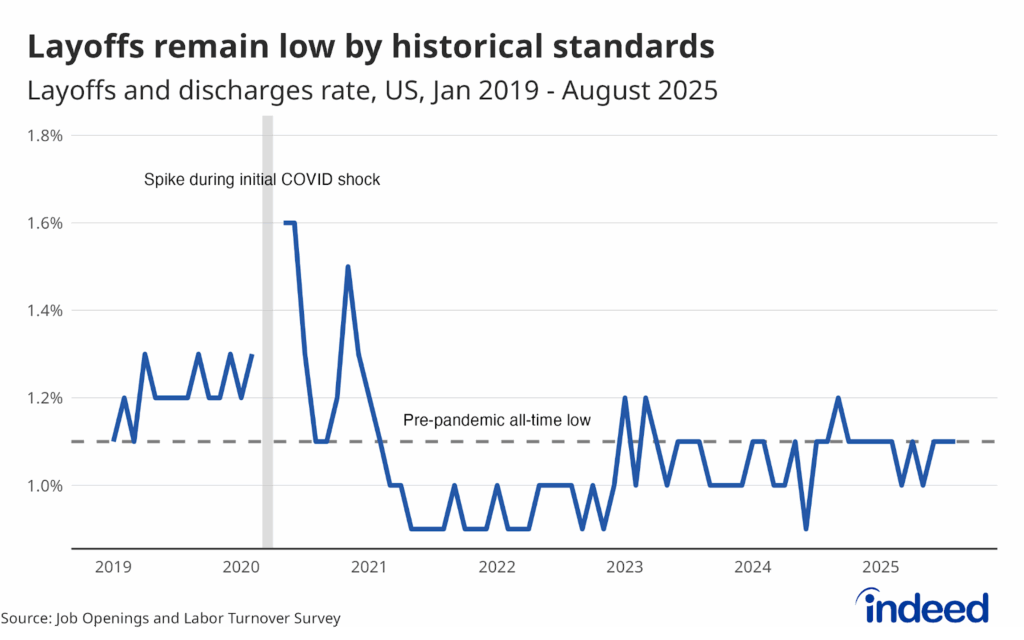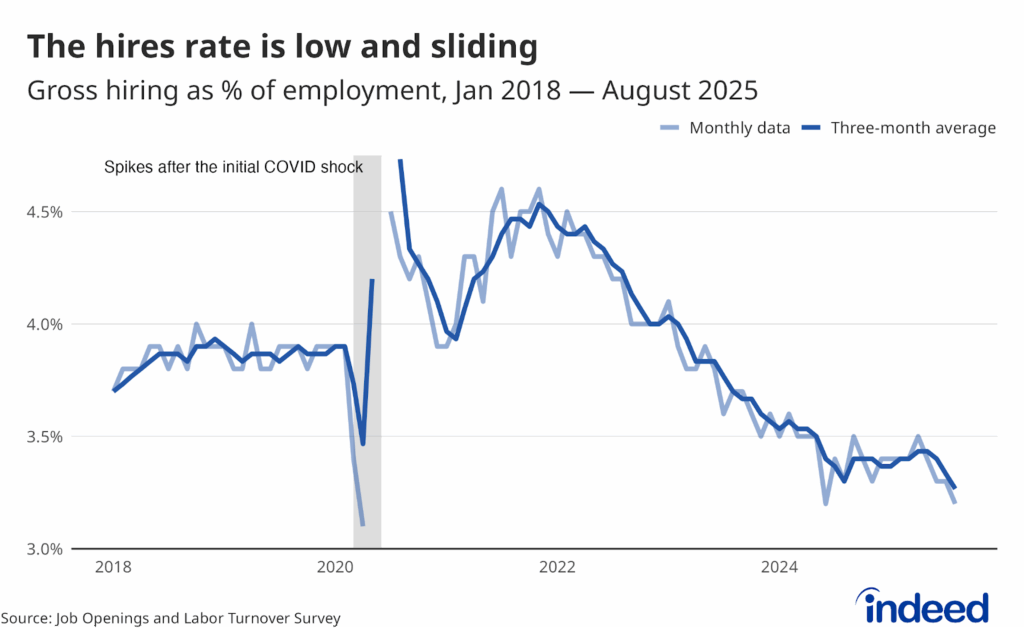Key points:
- There were 7.2 million job openings nationwide in August, unchanged from July, and the hires rate remained subdued at 3.2%
- The quits rate ticked down to 1.9% as jobseeker confidence continued to wane.
- The layoff rate stayed at 1.1%, continuing the low-firing, low-hiring pattern that has marked much of the past year.
The stagnation that has marked the labor market for much of the past year is both a positive and a negative trend for job seekers, employers, and the economy as a whole. Limited layoffs have been a reassuring constant in the face of mounting volatility elsewhere in the economy, and the relative stability for those workers who already have a job has helped keep spending steady. But for people seeking a job who are on the outside looking in, a lack of dynamism in the market is keeping their options limited. And even for workers with a job, frozen market dynamics may not offer much room for advancement or an opportunity to bring in new ideas through fresh hires.

August’s layoff rate of 1.1%, a hires rate of 3.2%, and 7.2 million job openings continued the low-firing, low-hiring trend that defines today’s economy. But frozen isn’t the same as stable. A stagnant labor market may look calm on the surface, but beneath that stillness is a lack of dynamism. Churn is vital to economic health, reflecting the confidence needed to leave one job for another to seek a role that better matches a given worker’s skills, interests, or desired compensation. Churn also pushes employers to compete to attract and retain talent, which can help raise wages and drive productivity, while also bringing in fresh perspectives. Without that turnover, companies risk falling into groupthink, outdated practices, and inefficiency.

In short, churn is what keeps the labor market moving forward. It isn’t just those who are struggling to break into a low-hire labor market that suffer in today’s low-fire, low-hire job market, but those who are still gainfully employed as well. That is why measures like job openings, layoffs, and quits are critical metrics to watch, because they capture the flows that define the labor market’s health. In essence, this data tells us not just how many jobs exist, but how alive the job market really is.


